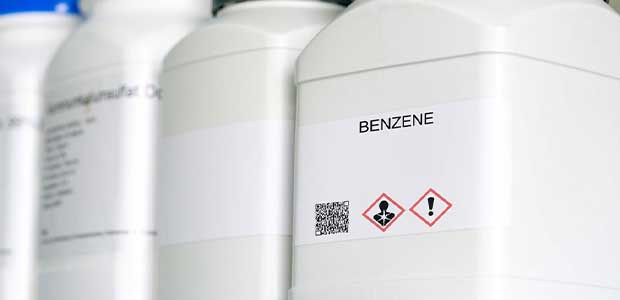
The Impact of Revising the Benzene Threshold Exposure Limit
It is estimated that nearly 1.37 million workers are exposed to benzene at work.
- By Bernard Fontaine
- Oct 03, 2022
The American Conference of Governmental Industrial Hygienists (ACGIH) proposes to reduce the eight-hour time-weighted average exposure threshold limit value (TLV) for benzene to 0.02 ppm and reduce the 15-minute short-term exposure limit (STEL) to 0.1 ppm. So, what is known about workers who were exposed to benzene, and how does this change the paradigm of what is already known? The U.S. National Occupational Exposure Survey (1981–1983) estimated that about 272,300 workers (143,000 women) were potentially exposed to benzene in the U.S. alone. Due to economic growth, technological and innovations in industry over the past 40 years, the current exposed population may be closer to 1.37 million workers nationwide.
Sampling data collected by the OSHA Integrated Management Information System (IMIS) shows limited evidence of data across the spectrum of industrial markets. The data collected shows that most workers (94.5 percent) would be exposed to benzene above the proposed ACGIH TLV. Only 2.9 percent of workers were exposed above the current ACGIH TLV of 0.5 ppm and 1.6 percent of workers were exposed above the OSHA Permissible Exposure Limit (PEL) of 1 ppm as an eight-hour TWA. So why has only limited evidence been collected to evaluate the workforce? Benzene is considered a confirmed human carcinogen by ACGIH, International Agency for Research on Cancer (IARC), National Toxicology Program (NTP) and the U.S. Environmental Protection Agency (EPA). Global burden of cancer is high and continues to increase based on epidemiological data. The evidence is clear that all workplaces should be reassessed for benzene vapor to determine occupational exposure if the ACGIH TLV and STEL are reduced.
Introduction to Benzene
Benzene or benzol is a clear, colorless, highly flammable liquid with a kind of sweet odor. It is an aromatic organic compound with the molecular formula C6H6. The chemical is abundant as a component in gas emissions in motor vehicle exhaust, volcanic or forest fires and it is found in gasoline, crude oil and cigarette smoke.
Benzene is a component of many industrial products derived from coal and petroleum and it is found in gasoline and other fossil fuels. Trace amounts of benzene can be found in chemicals like toluene, ethylbenzene and xylene, and it is used to make chemicals like cumene and cyclohexane. Benzene is used in the manufacture of plastics, detergents, pesticides, synthetic fibers, rubber, lubricants, dyes, resins, drugs and so many other industrial chemicals. Additionally, ink and variety of painting products, such as spray paints, base and top coat paints, sealers, lacquers and stains, also contain some portions of benzene.
This article originally appeared in the October 1, 2022 issue of Occupational Health & Safety.